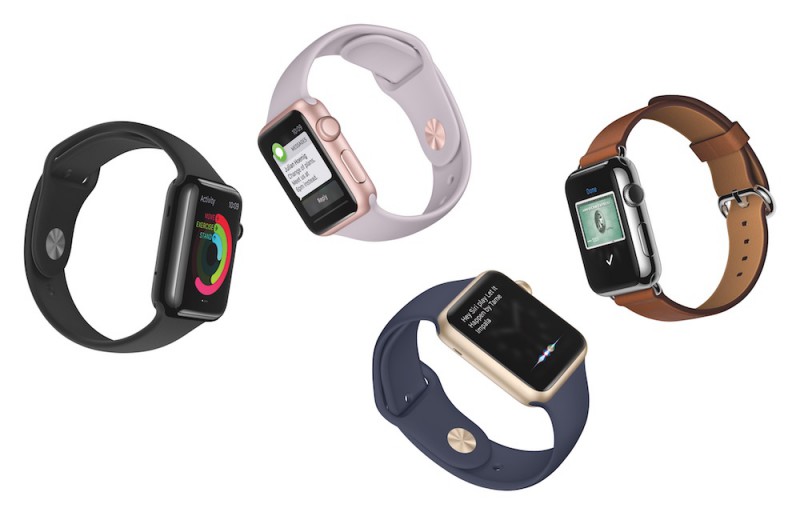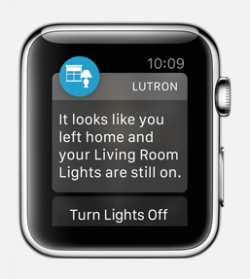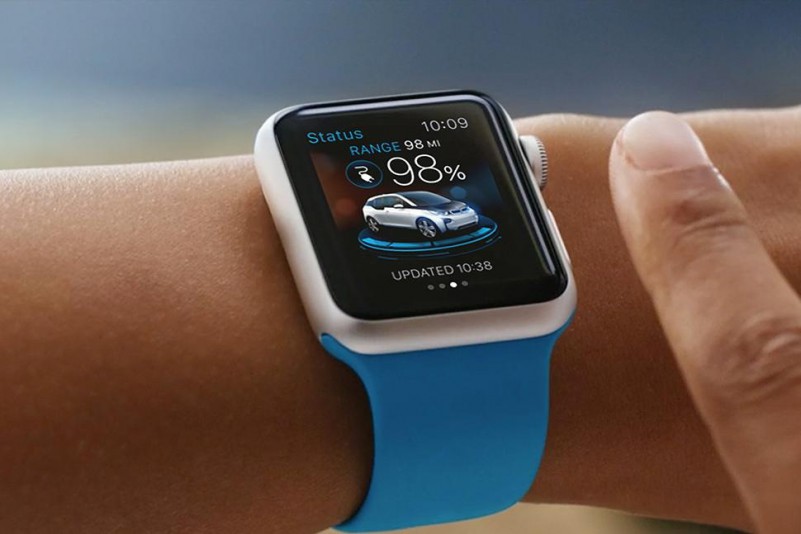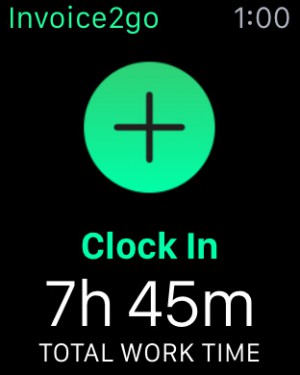A little over a year ago, we were talking about whether or not your company needed an app for the soon to-be-released Apple Watch. We wanted to revisit our article and see if our opinion held. Here’s what we came up with.
What we wrote back then
 Back in September 2014 (was that really only a year ago?) we wrote that yes, businesses should be thinking about Apple Watch apps as an extension to their iPhone apps. Specifically, we suggested that businesses should be exploiting two specific opportunities:
Back in September 2014 (was that really only a year ago?) we wrote that yes, businesses should be thinking about Apple Watch apps as an extension to their iPhone apps. Specifically, we suggested that businesses should be exploiting two specific opportunities:
- Using Apple Watch apps to deliver peripheral information to users’ lives in an unobtrusive fashion.
- Adding functionality to assist real world experiences.
The first of these is really about push notifications – quick updates on what’s going on with their phone, but on users’ wrists. The second of these is more of a creative app creation, building something new that can quickly solve a problem and present a solution on a very small screen. Those are what we predicted the Apple Watch was going to be used for.
Where we’re at today: push notifications
So far, we think our predictions then were more or less on the money, especially the first one.
The obvious parameter that defines app development for the Apple Watch is the fact that it’s really an auxiliary piece of technology. It works with the iPhone, but it cannot replace it. Therefore, apps need to be built for that limitation. This is why push notifications for the Watch are so effective – they provide users with information ‘at a glance’ without the cumbersome interruption to daily life of dragging a phone out of your pants pocket, just to see that someone @mentioned you on Twitter.
However, something we have noticed but didn’t anticipate is that a lot of Watch apps simply postpone the phone drag. They inform the user of something happening, but necessitate an iPhone to respond. For example, someone might message you that they’re running late. You’re likely to want your phone to respond with a message.
Our recommendation
So we’d like to tailor our recommendation to businesses a little. If your business is currently offering push notifications, then a Watch app should definitely be on your radar. But when you make your Watch app, we’d recommend only offering those notifications that inform the user but do not necessitate an immediate response. If you do require a response, then make it so simple and small that it’s a button touch on the Watch.

While in the short term, checking your Watch and then your iPhone might seem fine, we predict that the apps that truly become indispensable are those that operate more independently, either because they only inform, or because the required response is right there on the user’s wrist.
Where we’re at today: real world experiences
In our 2014 article, we recommended that businesses that can offer information that is useful and fully integrated into the normal user flow were going to excel. And we do stand by that. Our example back then was a BMW app that told people when their electric cars were starting to run out of battery and helped people locate where they were.

Useful information right where the user is.
Another example is Invoice2Go Plus, which uses the GPS setting to track you and prompt you to start recording your time. Simple and easy, exactly integrated to give you the info you need when you need it.

Our recommendation
We think that a year ago we got it right – apps that present useful information exactly when it’s needed and no other time are going to excel. In line with the trend towards single function apps, we think that the value of the Watch lies in precision, not wide scale information accessibility.
The smartphone has emerged to dominate maximum information connectedness; with a smartphone in your pocket, you can know virtually anything. But the Apple Watch, because of its small size and auxiliary design, isn’t intended to allow instant access to all information. Its role is to provide the right information, right when you need it.
It’s about selective information flow, not massive information overload. Apps and businesses that can work with those parameters will be best equipped to use the Watch to their advantage.
[contextly_sidebar id="aaRu8rw5OKVFjuPjFmnfKX1AtTyRs5yM"]
Summary
For the most part, we stand by our recommendations from a year ago. Businesses should have an Apple Watch app if they can provide notifications or if they can provide information to the end user at exactly the time when the end user needs it, without interrupting the flow of their day.
We think that a lot of businesses have fallen into the trap of requiring the iPhone to respond to push notifications. We think businesses would be better off pulling back and only providing notifications that either require not response or require only Watch-friendly responses (1-3 button taps).
Businesses that focuses on providing the right information at the right time are the best positioned to be the apps that become indispensable parts of the Watch owner’s day.
